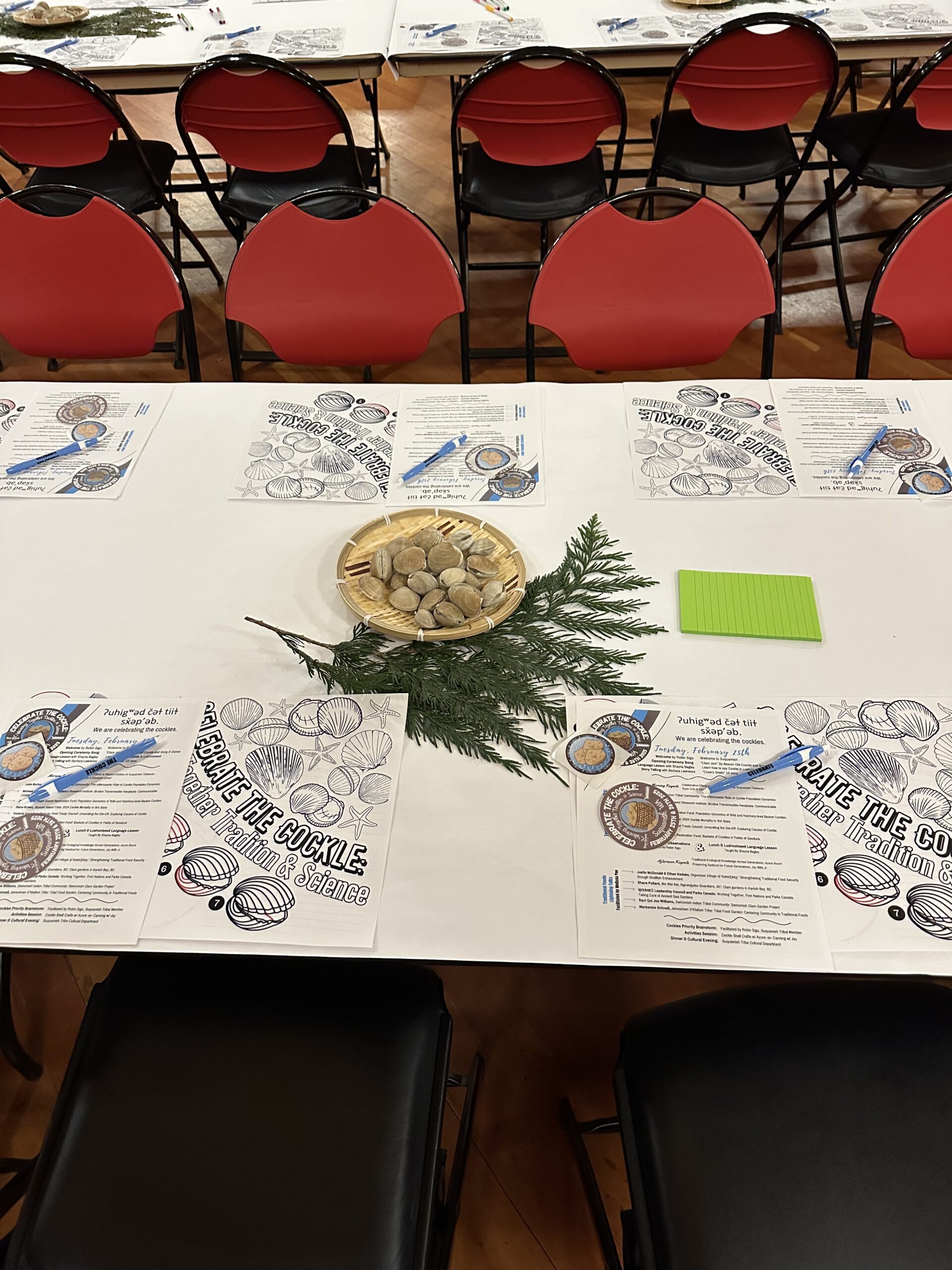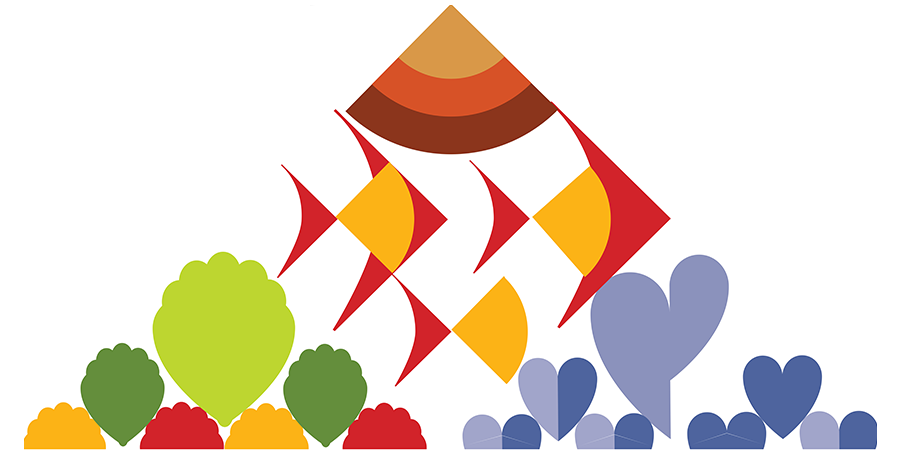
Squi-Qui (Joe Williams) speaking about the Swinomish Clam Garden at the Celebrate the Cockle event. Photo Credit: Elizabeth Unsell
On February 25th and 26th, the Suquamish Tribe hosted Celebrate the Cockle: Weaving Together Tradition & Science, a two-day symposium to discuss the cultural significance and restoration efforts surrounding the cockle. This event brought together tribal members, researchers, and community leaders from communities across Alaska, Canada, and Washington to share stories, culture, and the latest findings on cockle populations around the Northwest which have seen a significant decline in recent years.
The decline of the cockle, a culturally significant First Food for the Suquamish Tribe and other coastal Indigenous Nations throughout the region, has become a growing concern. What used to be an abundant shellfish species is now becoming much more difficult to find and harvest on local beaches. “During my childhood, cockles were a staple at our family gatherings and clam bakes” reported Azure Boure, the Traditional Plants and Medicine coordinator for the Tribe. She continued: “But now, they’re hard to find. So much so that my younger kids didn’t even know what cockles were.”
Declining cockle populations has become a growing concern for the Suquamish Tribe and other coastal Indigenous Nations throughout the region as it is a culturally significant First Food. What used to be an abundant shellfish species is now becoming much more difficult to find and harvest on local beaches. The decline of such an important food source has led to the Suquamish Tribe’s research and conservation efforts to restore this vital shellfish species back to their coastlines. “Subsistence harvest access to cockles on local beaches is a priority for Suquamish. We are learning so much about the challenges cockles face, while working towards being able to sustainably increase access to an important traditional food source,” says Suquamish shellfish biologist, Elizabeth Unsell.

The table displays at the Celebrate the Cockle event. Photo Credit: Olivia Horwedel
This event not only showcased the research and restoration efforts led by the Suquamish Tribe, but also emphasized other critical research topics relating to cockle conservation in Washington State. Some of the topics of these talks included cockle population dynamics, bivalve transmissible neoplasia (cockle cancer), the challenges of cockle mortality, cockle restoration efforts, and novel partnerships with commercial geoduck farms to increase community access to cockles.
In addition to technical lighting talks, the afternoon was filled with traditional foods talks that highlighted the importance of preserving shellfish populations for future generations, ensuring that the knowledge and traditions associated with cockles persist for many generations to come. There were presentations on traditional foods and medicine programs, as well as discussions on the continuation of care for clam gardens throughout the Salish Sea and beyond. This symposium offered a space for attendees to exchange knowledge, hear about ongoing restoration efforts, and discuss challenges and solutions for protecting this important species.

Jay Mills providing a demonstration on how to can cockles. Photo Credit: Elizabeth Unsell
While this event highlighted important research and ongoing projects relating to cockle conservation, it also celebrated the cockle through crafts, language and an evening rich with cultural stories, song and dance. Those in attendance got to learn traditional methods of canning with Jay Mills, integrate beautiful cockle shells into art with Azure Boure, and learn the word for cockle in Lushootseed from language expert Shayna Bagley: sx̌əp’əb. Celebrate the Cockle art and graphic design was created by Suquamish tribal members James Abler, Diana Riggen and Cori Silvey.
The first day concluded with a beautiful dinner highlighting Suquamish First Foods, including a clam bake with cockles and littleneck clams. From tasting the cockles to learning how to process and cook them, this event reinforced the cultural importance of the cockle, deepening our connection to this vital marine food throughout the celebration.

A feast of clams and cockles prepared by the Suquamish Tribe for dinner. Photo Credit: Olivia Horwedel
The second day of the event featured field trips to various sites, including the Suquamish Seafoods plant that processes cockle harvests as well as the Kenneth Chew Center and native shellfish conservation hatchery, where close project collaborators at Puget Sound Restoration Fund grow the spat for the Tribe’s cockle restoration efforts. These trips provided attendees with an opportunity to see firsthand the efforts being made to restore the cockle population and support sustainable shellfish practices. The tours were a perfect complement to the discussions from the previous day, showing how tradition and science are working together to ensure the future of the cockle.

Ryan Crim leading a tour at the Kenneth Chew Center on native shellfish conservation and hatcheries. Photo Credit: Elizabeth Unsell

Tour of Suquamish Seafoods during one of the field trips at the Celebrate the Cockle event. Photo Credit: Melissa Poe
Celebrate the Cockle was more than just an event—it was a meaningful opportunity for learning, exchanging knowledge, and building connections across the Northwest. Over the course of two days, attendees deepened their understanding of the environmental challenges facing the region, brainstormed future priorities for cockle restoration, celebrated the rich cultural heritage of the Suquamish Tribe, and gained valuable insights into the collaborative efforts to restore and protect the cockle population. To preserve the cockle is to ensure that future generations can continue to honor this culturally significant food and the traditions that accompany the cultivation and harvest of this incredible clam species.

Celebrate the Cockle logo designed by Cori Silvey using art from James Abler.
